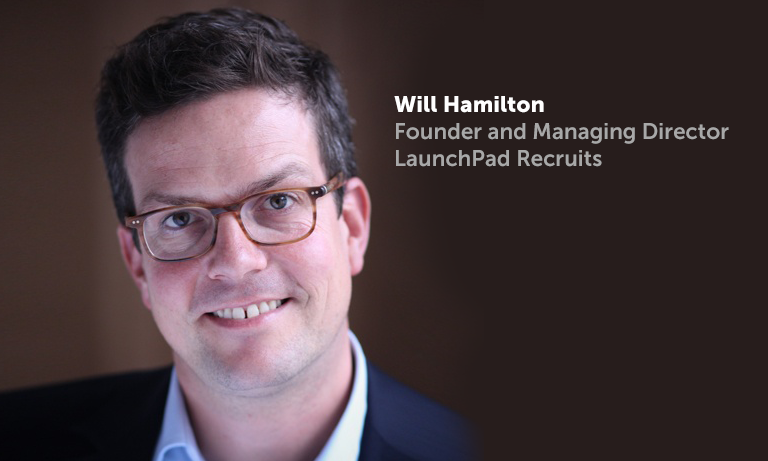 There are number of ways companies can avoid unconscious bias in the workplace
There are number of ways companies can avoid unconscious bias in the workplaceMany companies still struggle to foster diversity in the workplace. Let’s explore why equality and diversity should be a priority for any business, and how technology can help you achieve that goal.
The key to equality in recruitment is putting in place ethical, fair and traceable employment practices – not just paying lip service to having a company diversity policy. While the importance of considering race, age and gender should not be under emphasized, limiting company policies to just these three areas simply isn’t going far enough.
Expanding the definition of equality and diversity to include other commonly overlooked demographics, such as employees from various economic, academic or intellectual backgrounds, creates diversity of perspective in the workplace. A culturally and intellectually diverse workforce will bring fresh, new ideas to the table, driving innovation and creative problem solving within an organisation. It’s technology that is the key enabler on this journey.
Unconscious vs. Conscious Bias
There are two primary types of bias that can affect any community, whether it’s in the workplace, in a school or even amongst friends. One is conscious bias, which is a deeply held belief that’s often regarded as objective fact, and one that a person is aware of and unwilling to change. The other is unconscious bias, which is usually difficult to identify, and even more difficult to remedy.
It’s important that both types of biases are addressed in the same way – by making the recruitment process and the work environment as fair as possible, employers can overcome the obstacles prevent others within the organisation from accepting every person for who they are, and what they’re capable of.
Most companies understand the value of equality and diversity in the workplace, but many recruiters continue to slip into the pattern of hiring the same types of candidates again and again. It can be difficult for recruiters to keep unconscious bias from entering the recruitment process, but it can be even more difficult to recognise when a hiring scheme has already been compromised by discriminatory tendencies. Recruiters must take all of the necessary steps and utilise every tool available in order to avoid the pitfalls of a homogenous workforce.
A joint study by the University of Chicago and Harvard University found that African American applicants were systematically discriminated against during the pre-interview stage of the application process.
Researchers drafted fictitious resumes in response to job ads, with the only significant difference between them being that some were for “white” applicants and the others were for “African American” applicants. They discovered that the resumes with “white-sounding” names were up to 50% more likely to be called for an interview than those with “African American-sounding” names.
While this study took place in America, prejudice is just as prevalent in England. The Guardian published an article on a similar experiment that found “widespread racial discrimination against workers with African and Asian names” in the UK.
There are number of ways companies can avoid unconscious bias in the workplace, including:
Using blind recruitment techniques: Removing the name, date of birth, address, sex and other personal information that may impact a recruiter’s decision from every CV allows the employer to select candidates based solely on skills level and experience, which helps avoid gender, age and culturally-based discrimination.
Reinforcing positive images: When referencing fictional personas across company websites and media, use names and images from a wide range of cultural backgrounds and sexes. Also, if using real-life employee case studies on your company’s recruitment pages, use subjects from a cross-section of society to highlight your company’s diversity to the outside world.
Administer bias tests: Many online tests can help convince the cynics about the reality of unconscious biases. Once employees discover – and come to terms with – their hidden prejudices, you can start providing education through collaborative discussions, as well as critical thinking and diversity workshops
Using Technology to Boost Inclusivity
Incorporating innovative technologies like video interviewing, mobile services, automation and data analysis is an excellent way to streamline recruitment procedures, as all of these techniques allow HR professionals to get to know each candidate better, so they can be sure they’re hiring the best possible choice for the job.
The mobile application is quickly becoming non-negotiable aspect in the modern recruitment industry. If it doesn’t factor into your strategy already, you risk being unattractive to the majority of today’s tech-savvy candidates.
Moreover, utilising technology and analytics is one of the most effective ways to keep unconscious bias out of the recruitment process. The ability to track recruiting tendencies allows hiring managers to catch any problematic patterns as soon as they appear, ensuring that all qualified candidates start out with an equal footing.
On the flipside, measuring and analysing candidate data is also a good way to reduce bias. By ‘scoring’ candidates around a rubric, recruiters can focus on a prospective employee’s merit rather than on their background or personal life choices. Other technologies, such as automated job postings, help keep the recruitment process pointed in that same meritocratic direction, but at the end of the day, hiring decisions have to be made by actual people.
The Advantages of Video
A study by the Kurt Lewis Institute found that “minority” applicants prefer video interviews, as the platform allows them to be more personal, frank and take the time to present their best selves. Moreover, the same study indicated that more out-of-town candidates would apply for positions at companies that used video interviewing, reducing location-based discrimination and fostering a global applicant pool.
But recruitment software can do more for your company than just promote equality and diversity in the workplace. Here are some additional reasons to consider adding video interviews into your current recruitment scheme:
Strengthen your brand: Video interviews are a great way to communicate employer brand to potential recruits, including the benefits of working for the organisation, along with the company’s culture and core vision.
Reduce the time to hire: Video interviews aren’t nearly as time- or resource-intensive as in-person interviews. Furthermore, since only the top candidates will get to the interviewing stage, recruiters won’t have to waste valuable time and energy talking to the wrong people.
Easy collaboration with team members: With the ability to send the recorded interviews around to multiple staff members within the organisation, recruiters can collectively decide who should be accelerated to the next stage of recruitment.
Key Considerations When Implementing New Technologies
Incorporating new technologies like video interviewing software can reduce the chance for unconscious bias to influence hiring decisions, leading to increased intellectual diversity, creative abrasion and ultimately, a more innovative and successful company.
However, recruiters testing out a new process or technology should proceed with caution, so as not to introduce any new biases. Ensure that candidates are selected at random, and that they come from a variety of backgrounds. Put diversity and inclusivity at the heart of all aspects of the recruitment process.
Additionally, recruiters should track the results of any new procedures and use the data to build an ROI-positive case for the organisation. This could end up being the difference between the institutionalisation of a more effective, fresh strategy, or the company deciding to abandon the new system and revert to its old ways.
Achieving equality and diversity requires more than just government incentives and conscious willpower. To change a recruitment scheme to favour merit over bias, the fundamental underpinnings of an organisation’s existing strategy must change.
By Will Hamilton | Founder and Managing Director at LaunchPad Recruits
Get The Recruiting Times FREE every Monday – SUBSCRIBE NOW
Recruiters love this COMPLETE set of Accredited Recruitment & HR Training – View Training Brochure








